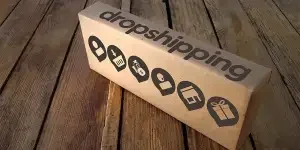As of mid-June 2024, Jeff Bezos has regained the title of the world’s richest man according to the Bloomberg Billionaires Index. Since his name is closely associated with Amazon, the news has only further reinforced the perception of Amazon as the world’s leading ecommerce platform, despite fierce competition from multiple new rivals.
With that and the influx of newcomers in the ecommerce world, many may perceive that eBay—the pioneer in online auctions/ marketplace, has lost its appeal. On the contrary, eBay still ranked as the second most visited online marketplace globally in 2023 and currently covers more than 200 countries. What makes this veteran of ecommerce continue to stay strong and how can one tap into its vast potential? Read on to find out how to sell on eBay for beginners, including tips on researching products and maximizing sales.
Table of Contents
1. Setting up an eBay account
2. Researching and listing products
3. Managing shipping and delivery
4. Promoting and maximizing sales
5. Get started with eBay today
Setting up an eBay account
In practice, one has to click through quite a few online registration pages to get signed up as a seller on eBay. In essence, however, it comes down to only two main steps: create the right type of account with the necessary contact information verified, and then complete the required details for payment information.
For the first step, visit this account creation page and choose between a personal account or a business account to fill out the required name, email, and other information accordingly. Although a personal account is theoretically intended for hobbyists or part-timers who simply have spare items at home to offer, the real watershed decision should depend on the total number of items one plans to list monthly. As shown in the screenshot below, a business account is meant for those who “plan to sell a large number of goods.”

The definition of a large number, though not listed here, is indirectly indicated by the free number of items that can be listed monthly with a personal account. As depicted in the picture below, up to 250 items can be listed for free each month; thereafter, an insertion fee between $0.35 and $20 per listing applies, depending on the product category.

Regardless of whether one opts for registration of a personal or business account, the account holder must first verify their email address and then fill out the relevant phone number for verification again to complete the initial phase of eBay seller account registration. For the business account, however, prior to moving on to the next step, the account registrant must first confirm their type of business, whether it is a sole proprietorship, a registered business such as an LLC or corporation, or a nonprofit organization.
As highlighted in the image below, while the good news is that sole proprietors who have not registered their businesses can also register a business account with eBay, this is not without conditions. Generally, this means that the business name on eBay should be the personal name of the business account registrant as well since the payment bank account name should match the business name, which, for most sole proprietors, means their personal names.

Finally, in terms of updating personal details and payment information, personal account holders have the option to fill it out later and proceed with product listing first, business account holders must complete their personal and bank account details before they can proceed with product listing.
Researching and listing products
What to sell on eBay and where to source them
Before researching the right products to offer on eBay, let’s address the question raised earlier: What makes eBay remain a relevant and vibrant eCommerce platform today after so many years? This apparently has much to do with its unique proposition: the online auction business model for used goods and distinctive products. For example, a quick search for unusual items on eBay reveals an independent section that covers multiple subcategories, unlike other marketplaces which do not provide such detailed categorizations.
The latest customer satisfaction index measured by the American Customer Satisfaction Index (ACSI) for online retailers validates eBay’s approaches to retaining loyal and satisfied customers, with a score of 81 out of 100 for customer satisfaction in 2024 so far. However, don’t mistake eBay as only about second-hand goods and fierce bids. In contrast, official stats from eBay show that 90% of products listed on eBay now are non-auction items and 80% of them are brand new.
That is to say, while used goods, collectibles, and auction models may resonate with long-time active customers of eBay, decisions about what to sell on eBay still better rely on strategic tools and data such as:
- Product research tool from eBay: Terapeak, available under the “Seller Hub” section of eBay, is offered for free to both individual and business sellers. However, business account sellers subscribing to at least a basic store plan gain access to its sourcing insights features. Terapeak provides comprehensive insights on product performance across eBay’s marketplaces, including filterable parameters such as listing types, pricing, buyer countries, and timing. Sellers can utilize it to identify sales trends and popular products while devising relevant sales and marketing strategies.
- Product research tools by third parties: Besides eBay’s proprietary tools, new sellers can also go for third parties’ product research tools and product database software to gain insights into profitable products on eBay, the current market outlook, practical sales stats like sell-through rates, and data on sold and unsold items. These tools offer detailed reports related to top active listings as well as new listings to help sellers optimize their product offerings. Many of these tools provide both free and paid versions, ideal for beginners who are keen to test out different research tools.

- Best-selling items findings: Based on findings compiled by market research and specialized eBay product research tools and websites, the following are some of the best selling items on eBay this year:
- Smartphone accessories and consumer electronics such as phone cases, screen protectors, earphones, HDMI cables, and video gaming consoles.
- Home decor and garden products such as bedding essentials like bedsheets, blankets, quilts, and pillows, small kitchen appliances as well as home decor items.
- Health and beauty items include fitness products such as sporting goods and related apparel like athletic wear and accessories, cycling clothes, bicycle parts, yoga mats, and anti-aging supplements and vitamins.
- Clothing accessories, jewelry, and watches especially hats, bags, shoes, earrings, pendants, bracelets, and men’s watches as well as smartwatches.
Knowing what to sell on eBay is only solving half of the puzzle if one does not also master the sourcing methods. Thankfully, the sourcing process essentially boils down to only two main methods: wholesale and retail arbitrage. Let’s dive into details about each of them:

- Wholesale B2B marketplace: Sourcing from a wholesale B2B marketplace like Alibaba.com is the most straightforward way to gain instant, direct access to thousands of manufacturers and suppliers. A significant advantage is that since it includes suppliers from many countries, it can hence provide a great diversity of product sources and language support.
Alibaba Verified Supplier and the new Alibaba Verified Pro Supplier are two reliable ways to find dependable suppliers, especially those looking for bulk orders for OEM (Original Equipment Manufacturer) / ODM (Original Design Manufacturer) manufacturing customizations. The variety and flexibility of OEM and ODM options available on Alibaba.com are particularly valuable for launching private labels. To gain more insight, explore professional tips on finding trustworthy wholesale manufacturers, which include understanding the key differences between OEM and ODM, as well as strategies for locating reliable manufacturers online.
- Retail arbitrage: This sourcing method virtually covers all retail-to-resell models, including products sourced from retail stores, garage sales, local and online thrift stores, flea markets, or any specialized market and sales. Collectibles, vintage items, and unique finds are among the most common items sourced through this method.
Product listing
Right after seller account creation and payment info setup and verification, the freshly minted eBay sellers can proceed to get their products listed by simply clicking on the “Sell” button on the top menu or the “Selling” button under the “My eBay” option to “create listing”. Some of the product listing processes to consider include:
- The eBay Create listing page provides a rather complete and intuitive interface to help sellers list their products. Sellers simply need to key in their product names to find a match and confirm the condition of the selling item before proceeding with more in-depth product listing details such as item titles, categories, and specifications like size, color, and designs.
- As part of the efforts to optimize listings, sellers should opt for adding high-quality photos and videos to remain appealing and engaging. Take note of the maximum photo and video file requirements highlighted by the “i” icon in the interface. While the importance of writing compelling titles and descriptions cannot be overstated, eBay has recently incorporated the “Use AI descriptions” function to help sellers prepare relevant and enticing descriptions. Simultaneously, anyone who would like to make full use of AI-powered digital marketing tools can check out more AI-generated content tools to enhance their product listings on eBay.
- Finally, the selling price is the last item to be completed before moving on to the information related to shipping and deliveries. Remember to choose the preferred pricing format between auction and buy it now, and pay attention to the “see pricing options” button to understand options such as “Autofill pricing details,” “Best offer,” and “Volume pricing.” One should also learn about the minimum charges from eBay prior to making decisions on selling prices to ensure sufficient profitability. Even though eBay’s selling fees for business accounts and personal accounts are pretty similar, fees for business accounts are generally higher due to the minimum store package subscription fees involved.
- For more tips on how to create listings on eBay and ways to optimize these listings, visit official eBay sites regularly.
Managing shipping and return

eBay offers a variety of shipping options, ranging from economy and standard shipping to expedited shipping for both domestic and international shipments. Sellers can choose between standard shipping methods for small to medium items and freight options for oversized items. The eBay International Shipping program allows eligible US sellers to simply deliver goods to eBay’s domestic shipping hub, from where eBay handles the subsequent international logistics.
Sellers can also leverage the combined shipping feature offered by eBay to encourage buyers to make additional purchases. Furthermore, sellers must decide between flat rates for all locations or calculated rates based on package size and different locations on the eBay listing interface, as this decision is required for both domestic and international shipments. Generally, calculated rates are a safer option, especially for beginners who are not yet familiar with customer demand and shipping costs.
Sellers must also set up the estimated handling time and return policies accordingly. eBay allows 30-day and 60-day options for domestic returns, while international returns come with 14, 30, and 60-day choices. Since shorter handling times— the period from receiving payment to passing the item to the shipping carrier—results in faster delivery to customers, it is recommended to set handling times to a few business days at most.
As reflected in multiple studies, more than 60% of e-commerce buyers prefer free shipping and may stop buying from sellers who do not offer it. Moreover, about half of them considered free return shipping an important factor influencing their purchase decision. Therefore, free shipping and free returns can be key advantages that help to build customer trust and boost initial sales for novice sellers on eBay.
Promoting and maximizing sales

Make use of eBay’s promotional tools
Take full advantage of Promoted Listings—eBay’s tool to ensure higher search result listings and boost visibility. The advanced program allows premium placement with advanced keyword and bidding controls. The most significant benefit of this is that all promoted listings are payable only when a buyer clicks on the promoted listing and makes a purchase. According to eBay, Promoted Listings Standard campaign users reportedly experience an average of 25% more clicks on their listings than non-promoted items. Shopify also noted that sellers using Promoted Listings observed a 36% increase in listing visibility.
On top of that, Seller Hub Promotions is another convenient and effective promotional tool offered by eBay. Sellers can create special promotions, such as seasonal offers, coded coupons, shipping discounts, and markdown sale events that offer significantly reduced-price items, basically all types of efforts aiming at winning over customers.
Enhanced selling strategies
Aside from relying on promotional tools, optimizing listing content by identifying relevant SEO keywords using eBay-specific SEO keyword tools such as Keywordtool.io and Keyword Tool Dominator is crucial. For more details, one can also refer to some beginner’s guides on how to make full use of these eBay keyword research tools. In the meantime, in this data, image, and animation-intensive era, high-quality images and quick videos are also vital to ensure the product listings are easily found and remain visually engaging.
While everyone knows that the quickest way to build a good reputation on eBay is to receive positive feedback from buyers, many do not specifically implement steps/ strategies to achieve this. One of the ways to achieve this is to promptly request feedback in a subtle way, such as including a note with every purchase or sending a follow-up email to offer after-sales assistance. Nevertheless, the most effective way to earn positive reviews is to make a good first impression by sending well-packaged items delivered via free or expedited shipping at a fraction of the cost. Striving to source affordable and durable packaging materials while also looking for reliable and cost-effective carriers to offer these benefits are keys to earning the positive feedback deserved.
Get started with eBay today

In a nutshell, setting up an eBay seller account involves two key steps: create an account according to individual or business selling needs with email and phone number verified, and update the payment information details accordingly. Before starting to sell on eBay, it’s crucial to determine what to sell and where to source the products using product research tools offered by eBay or third-party tools. Product sourcing can be done via wholesale B2B marketplaces such as Alibaba.com or through retail arbitrage from different retail outlets.
It’s vital for sellers to understand eBay’s fee structures while determining prices for their products. Sellers should also establish appropriate and clear shipping and return policies to streamline and facilitate product shipments. Ultimately, utilizing promotional tools offered by eBay and optimizing listings through SEO keyword tools tailored for eBay are effective ways to enhance the marketing effectiveness of eBay listings.
To learn more about ways to sell on various ecommerce platforms, product sourcing, and wholesale business ideas, explore Alibaba.com Reads frequently; the next significant idea could be just a click away.



